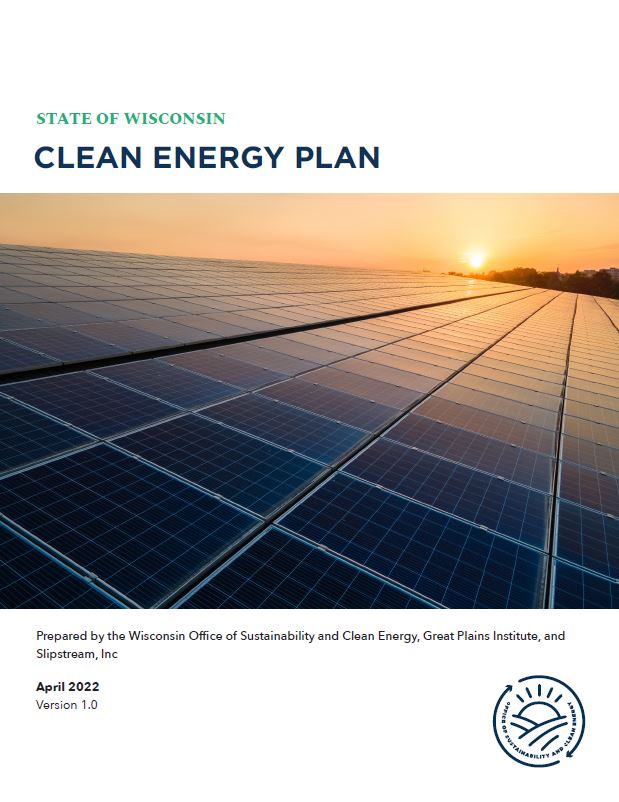2023 Clean Energy Plan Progress Report
"The climate crisis is taking an undeniable toll on the health, safety, and economic well-being of folks across our state. The livelihood of Wisconsin farmers is in danger with extreme and unpredictable weather taking a toll on crops and production, our state’s tourism industry and economy depends on our vast and valuable natural resources, and as health professionals have indicated, the health of our people depends on the health of the environments they live in.
Every Wisconsinite—whether they live in the Driftless, the Central Sands, the Northwoods, or in the heart of our urban areas—has experienced the effects of climate change in one way or another, and reducing carbon emissions and bolstering clean energy opportunities will remain a priority for me as long as I am governor. We don’t have to choose between mitigating climate change and protecting our environment and good-paying jobs and affordable energy. Wisconsin is ready for bold and urgent solutions that will stop treating these goals as mutually exclusive—we can and will do both. Together, we can deliver on our promise to leave our kids with a better life and a better world than the one we inherited by building a sustainable state and economy for the future."
- Governor Tony Evers

View the condensed Clean Energy Plan in your preferred language:
Click here to view the full Clean Energy Plan.
Recognizing the existing conditions in Wisconsin and the need to move toward a clean energy economy, the OSCE developed a state-wide clean energy plan in collaboration with state agencies, local governments, native nations, frontline communities, NGO’s, utilities, industry representatives, and others.
While prioritizing the core values of justice, equity and collective action, the Clean Energy Plan achieves the following objectives:
- Putting Wisconsin on a path for all electricity consumed within the state to be 100 percent carbon-free by 2050,
- Ensuring that the State of Wisconsin is fulfilling the carbon reduction goals of the 2015 Paris Agreement,
- Reducing the disproportionate impacts of energy generation and use on low-income communities and communities of color,
- Maximizing the creation of, and equitable opportunities for, clean energy jobs, economic development and stimulus, and retention of energy investment dollars in Wisconsin,
- Improving reliability and affordability of the energy system,
- Strengthening the clean energy workforce through training and education, while retraining workers affected by the transition from fossil fuel to clean energy sources, and
- Protecting human and environmental health by reducing ecosystem pollution from fossil fuels.
The Wisconsin Clean Energy Plan sorts strategies into four key pathways to create momentum towards a clean energy economy, these are:
-
Accelerate clean energy technology deployment – Increasing funding options for projects, investing in infrastructure, new emissions goals, expanding state energy resources for generation, technology innovation, equitable expansion of clean energy, leveraging existing policies and programs.
-
Maximize energy efficiency– strengthening energy efficiency standards and goals to reduce energy waste and save consumers money on energy costs.
-
Modernize buildings and industry – addressing building codes, supporting electrification, expanding funding, and supporting industry and businesses in their transition
-
Innovate transportation – support the transition to low- to no-emission vehicles and supporting refueling options, along with planning and increased options to move people around.
Below are additional ways the CEP ensures an inclusive transition:
- Prioritizing health equity, environmental justice, and equitable economic development,
- Fast-tracking workforce development and just transition, and
- Accelerating government-led efforts (Lead-by-Example).
Your Input is Welcomed!